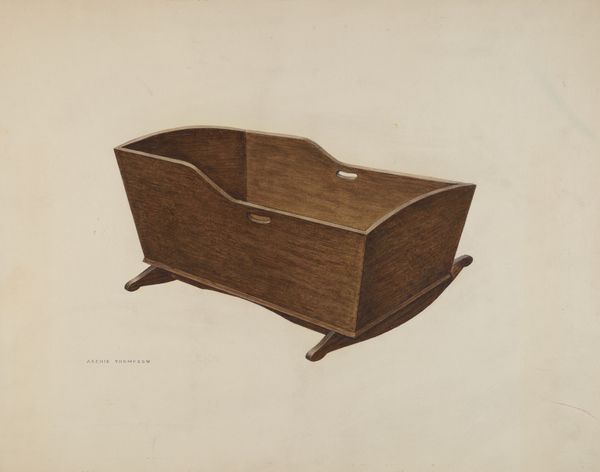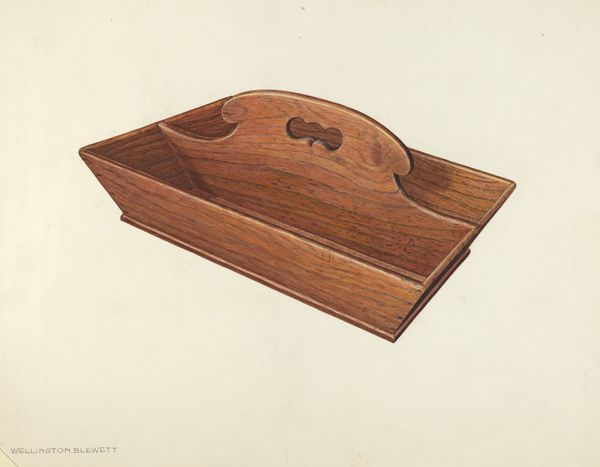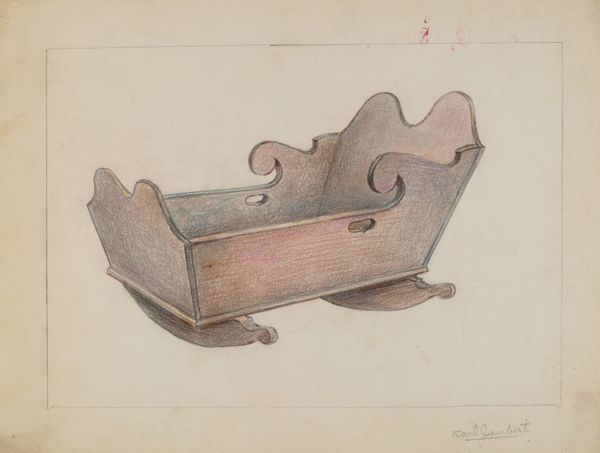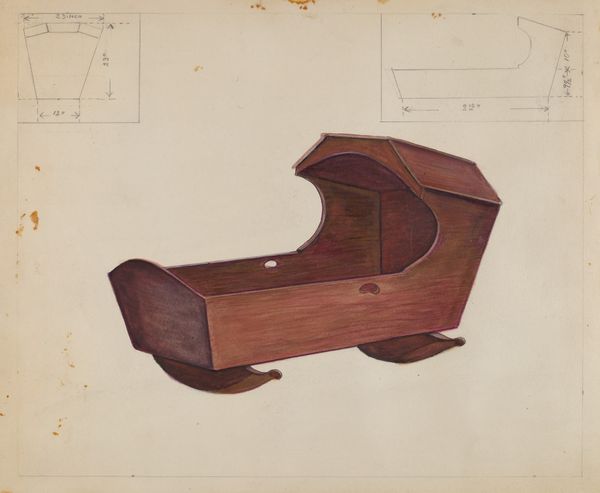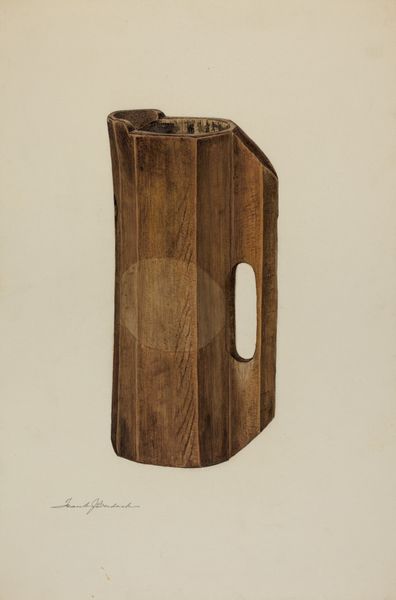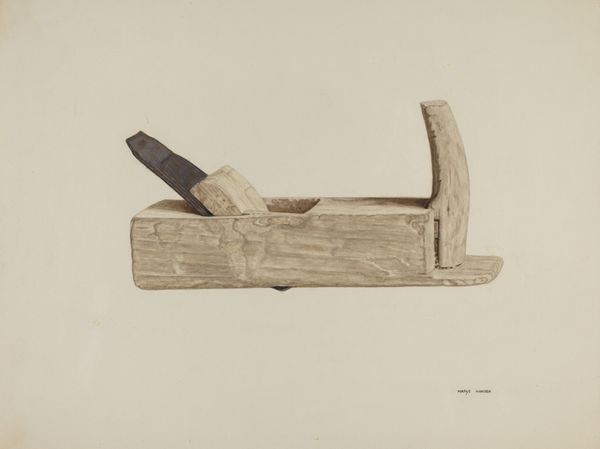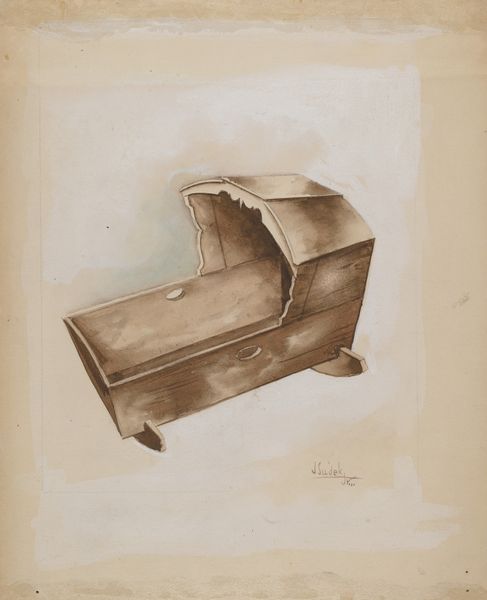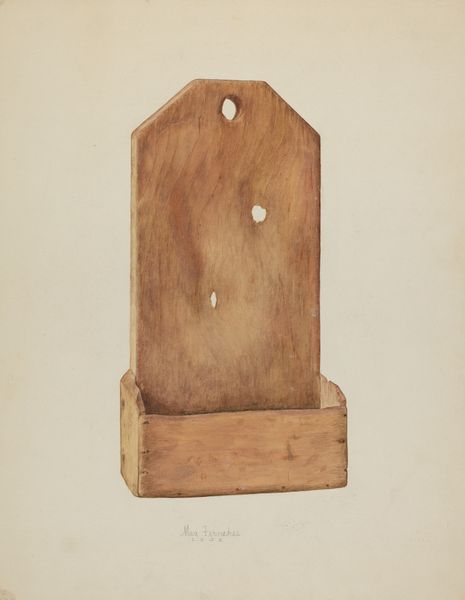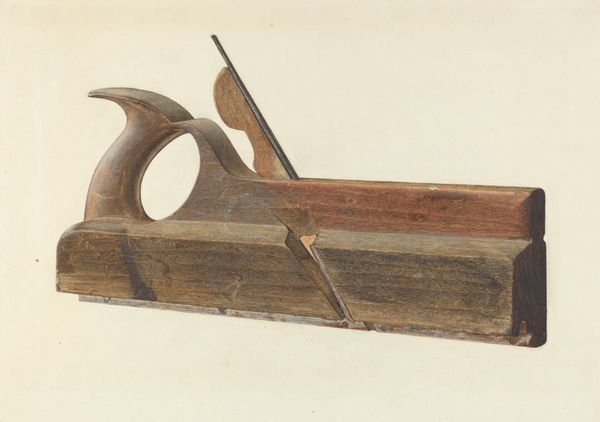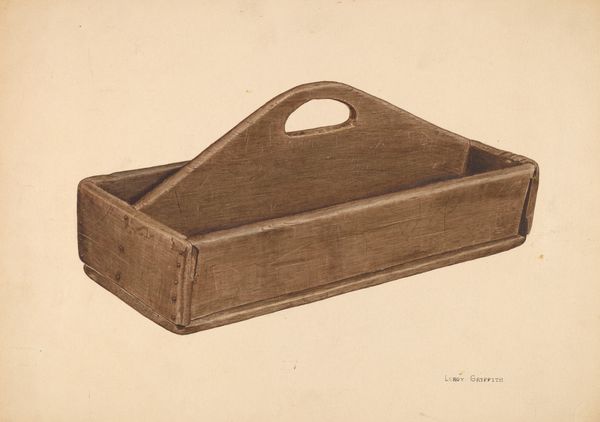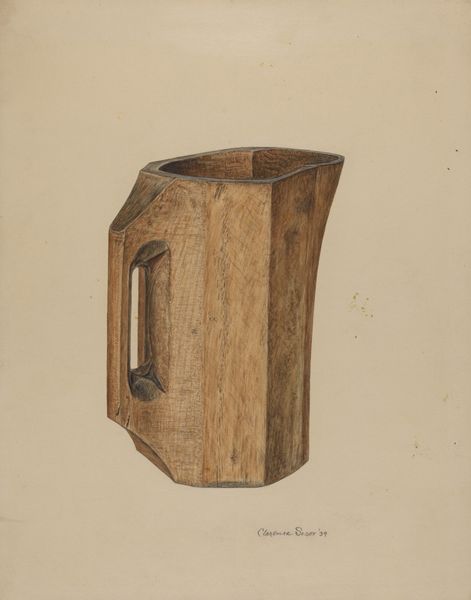
drawing
#
pencil drawn
#
drawing
#
amateur sketch
#
toned paper
#
light pencil work
#
white clean appearance
#
pencil sketch
#
charcoal drawing
#
pencil drawing
#
tonal art
#
watercolor
Dimensions: overall: 26.2 x 35.9 cm (10 5/16 x 14 1/8 in.)
Copyright: National Gallery of Art: CC0 1.0
Curator: This is Edward L. Loper's "Cradle," likely from around 1936. It's a pencil drawing, and what's interesting is how such a common object is rendered. Editor: It's simple, almost stark. It feels less like a comforting image of infancy and more like... a design study? What do you see in it? Curator: Precisely. We must consider the labor involved, the literal hand that crafted the cradle, and then Loper’s hand translating that craft. Was it mass-produced or made by hand? This impacts the cradle’s social value, doesn't it? Consider, too, the toned paper—cheap? Readily available? Does that choice democratize the image itself? Editor: So you're saying the medium affects how we perceive the object? The humble pencil drawing changes its status? Curator: Absolutely. A photograph might convey sentimentality; here, we're forced to consider the materiality of both the cradle and its representation. Look closely at the wood grain simulated by the pencil strokes – that imitation of material adds a conceptual layer. Is it mocking the mass produced object? Ironic? What's being consumed here, actually? Editor: I never thought about art as commentary on *consumption* in that way, even a seemingly simple drawing. That changes how I look at everything, now. Curator: Indeed, from cradle to... commodity? Art asks the most simple but important questions. The focus here transforms what would be, otherwise, a domestic tool into a sign of culture. And our conversation creates *value* of another kind, for future viewers of the artwork! Editor: Thank you so much for your insights; this really reshaped my perspective.
Comments
No comments
Be the first to comment and join the conversation on the ultimate creative platform.


